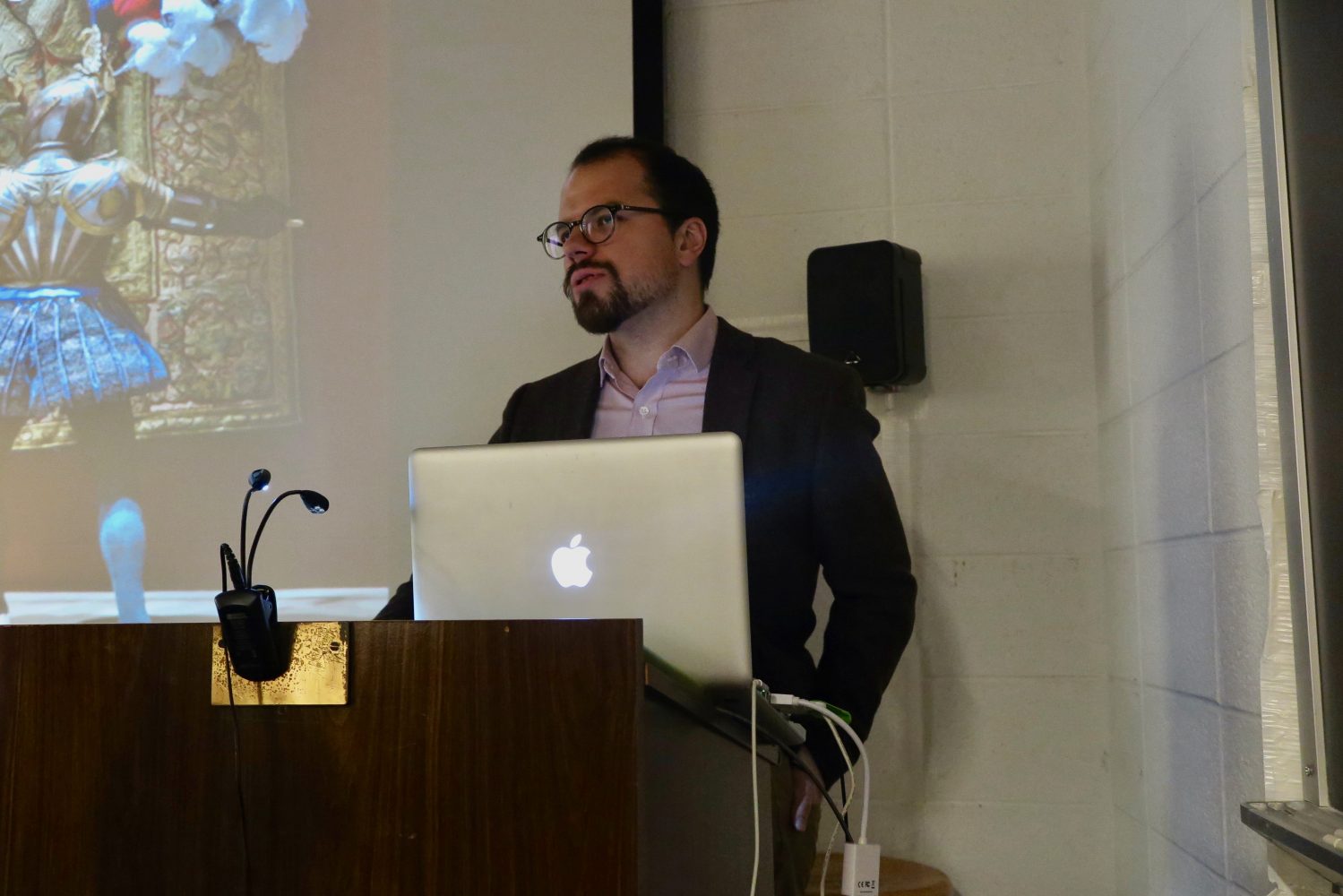While some people joke that a Bachelor of Arts degree is useless, there are number of unique and rewarding careers opportunities available to students after they graduate.
As the associate curator at the Art Institute of Chicago, Jonathan Tavares has had the privilege of helping to collect rare arms and armors dating back to the Middle Ages.
On Monday, Nov. 20, Room A202 of the Fine Arts Center was packed with students and faculty who came to listen to Tavares speak about his career. All desks were full, along with added chairs. Others stood in the back of the room or in the doorways.
The Deering Family Galleries of Medieval and Renaissance, which opened earlier this year, was made possible in part by Tavares. He was invited to the University of Rhode Island to discuss the practicalities of his profession along with all the behind the scenes work that goes on when it comes to assembling an arms and armor gallery.
Tavares’ lecture began with explaining the background of how the collection of arms and armor got started. He explained how the final product of suits seen on display typically consist of pieces that were originally from various suits.
Tavares’ went on to talk about how the gallery he worked on at the Art Institute of Chicago tends to display the “45 percent of best of the best” for armors. Tavares considers this as a high percentage. He says there’s only a few other things he would like to display. The other 55 percent is in storage.
While it originally seemed like many of the students in attendance were there as part of a requirement for class, once the lecture started most listeners appeared to be interested in what Tavares had to say about arms and armor.
“What I found the most interesting was when he was describing the gothic era and how it was more so based on their jackets and how it even showed the shirt underneath,” said Victoria Lai.
Many other students along with Lai were impressed by the details of the recreations in slides that Tavares’ presented. His detailed explanations of the history showed the room of listeners how devoted he is to arms and armor.
From Tavares’ choice of words and excitement behind each sentence he spoke, he made his passion quite clear behind the subject of arms and armor.
Tavares further went on to talk about how every detail of the gallery mattered. From the precision of colors and material of the outfits down to even the lighting of the gallery.
He went more in depth explaining how LED lighting is “rather new and advanced for a display… It means one touch of a button and you can make it into a dance party of a blue light.”
Travis said high tech lighting is not typically needed but having the right lighting is important.
Tavares included some of his own humor through his comments during the lecture, which showed his interest of the subject and how strongly he promoted the importance of preserving arms and armor.
Art History Professor Lisa Tom invited her students to come hear Tavares speak. Tom thought it was important for her students to “get a better sense of the practicalities of the profession, what you can do with the degree, what people explore and what they study. Also, the interdisciplinary collaborations that occur through art history and curation.”
Through Tavares’ excitement for the the work he does in his career and his keen eye for details when it comes to the history and assembling of arms and armor, this was anything but a dull lecture in the Fine Arts Center.





